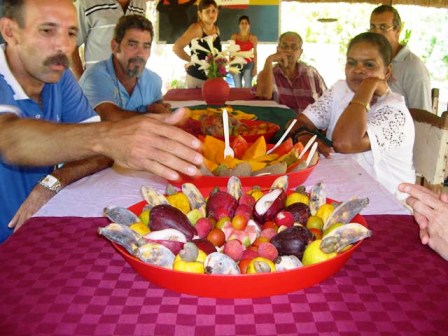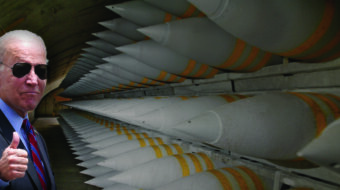
President Raul Castro last year signaled increased food production as Cuba’s top priority. With 75 percent of food being imported and half of Cuba’s agricultural land lying idle, food sovereignty had become a matter of national security. In the midst of the world economic crisis, income from Cuban-Canadian nickel production, tourist spending, and remittances from Cubans living abroad has fallen. Compounding matters were drought and flooding and wind damage caused by the 2008 hurricanes.
The government responded by opening up unused land to farming cooperatives and individual farmers under long term contracts, also reducing bureaucratic constraints and aiding farmers with technical support and credit arrangements. Data from 2009, newly available, suggest progress, along with residual sticking points
Granma newspaper last week quoted Orlando Lugo Fonte, President of the National Association of Small Farmers. Lugo, who is also a member of the Council of State, Cuba’s top ruling body, applauded “advances with a minimum amount of resources” in milk, rice, and pork production and in cattle-raising. However, Lugo said, improvement was needed “in terms of organization, efficiency and discipline.”
Milk sales to the government were up 22 percent over 2008. Some 40,000 small farmers have begun to raise cattle on formerly unused land, Lugo said. A new pilot program to supply fresh milk for children and health impaired adults through neighborhood stores expanded to 89 municipalities and 6000 stores. Imported powdered milk no longer is needed in 66 municipalities. Milk sales by cooperatives and individual peasants to the state rose from 106 million liters in 2006, to 145 million in 2007, to 226 million in 2008, and last year to 290 million. There are plans to manufacture powdered milk so as to take advantage of milk surpluses during peak production seasons.
Pork made available for state purchase represented 70 percent of all pork produced, a significant yearly increase. Lugo Fonte predicted that pork and beef production would continue rising. Reasons include home grown feed substituting for expensive imported grain, replacement hogs being raised on the farm rather than being imported, and simplification of government rules on selling animals for slaughter, and on farmers’ income.
Planners have instituted measures aimed at increased rice production by cooperatives and peasants. To improve on the 49,000 ton total of rice produced in 2008, Cuba has put 40 cooperatives on track to produce 5,000 tons each, a goal that ten of them indeed attained last year. Until recently, cooperatives and individual farmers accounted for only 12 percent of total national rice production. Last year they were responsible for 60 percent of Cuba’s internal rice production.
Fruit production, however, has not advanced, although improved yields are expected from efforts at multi-cropping and multi-species single orchards. Increased tomato yields – 104,000 tons last year, despite severe drought – did away with imports, making for savings estimated at $8 million. Thousands of acres have been returned to sugar cane production, especially in Camagüey. Cane residue known as bagasse contributes now to biomass used as fuel to generate electricity, replacing almost 40,000 tons of fuel oil.
In recent remarks to the National Assembly, President Castro lauded production achievements but highlighted flaws in food distribution. Suburban farming complementing Cuba’s much vaunted urban agriculture is seen as one solution. Initial efforts in this vein centered on terrain around 18 municipalities. Suburban agriculture makes for short transportation distances, closer ties between producers and urban consumers, and reduced spoilage. Small farmers are featured players in this venture, encouraged to utilize draft animals and organic pesticides and fertilizers.
Peter Rosset of Via Campesina was present at the 2nd International Meeting of Agroecology and Sustainable Agriculture held recently in Güira de Melena, Havana Province, which was attended by 170 delegates from 26 countries. The well known advocate of agricultural alternatives held up Cuba as a “beacon” of the world agro-ecological movement, because of its emphasis on family-centered, organic, and small scale agriculture.
On hand at the same meeting, Orlando Lugo Fonte reported that 120,000 small farmers are practicing organic agriculture in Cuba and that last year 100,000 tons of worm – derived humus and 150,000 tons of organic fertilizers were used. The National Association of Small Farmers held its 10th National Congress in mid January. Its focus was on strengthening agricultural cooperatives and increasing food production.
Photo: Farmers from the Granma Cooperative, just outside of Havana, share the fruits of their labor. John Bachtell/PW












Comments